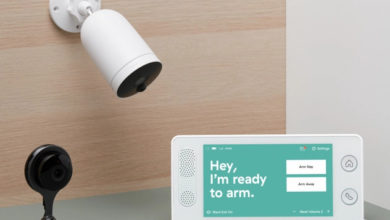Mastering Door Security: A Comprehensive Guide to Understanding, Changing, and Choosing Locks
KEY TAKEAWAYS
A lock is a device that is used to secure doors, gates, cabinets, and other entry points to prevent unauthorized access. It consists of several components, including a locking mechanism, a key or combination, and sometimes additional features like bolt holes or strike plates. Locks come in various types, including knob locks, deadbolt locks, smart locks, and lever locks, each with its own unique features and benefits.
The locking mechanism is the heart of a lock, typically made up of pins or cylinders that align when the correct key or combination is inserted, allowing the lock to be opened. Locks provide an essential level of security and give individuals peace of mind knowing that their belongings are protected.
Why Would You Need to Change a Lock?
There are several reasons why someone would need to change a lock. One common reason is when the lock becomes worn-out or damaged, making it difficult to use or compromising its effectiveness in securing the door. Another reason is the desire for increased security, as older locks may not have the same level of protection as newer, more advanced lock systems.
In the unfortunate event of lost keys, changing the lock becomes necessary to prevent unauthorized access. Additionally, changing locks can be necessary for uniformity in key access, especially in situations where multiple locks need to be accessed with the same key. Whether it be for worn-out locks, increased security, lost keys, or the need for uniformity in key access, changing a lock can provide peace of mind and assurance of safety.
Preparing to Change the Lock
Before you begin the process of changing a lock on a door, it is important to gather all the necessary tools and materials. Start by identifying the type of lock you currently have, as different locks may require different replacement methods.
Determine whether you need to replace the entire lock mechanism or just the cylinder. Measure the size of your existing lock to ensure you purchase the correct replacement. Moreover, make sure you have a Phillips head screwdriver, a paper clip or small pin, and any other tools that may be required based on the specific lock type.
Finally, it is always recommended to have the contact information of a reliable locksmith on hand in case you encounter any difficulties during the process. By taking these steps, you can ensure a smooth and successful lock replacement.
Necessary Tools and Materials
To change a lock on a door, you will need a few necessary tools and materials. These include a measuring tape, screwdrivers or a drill with screwdriver bits, a replacement deadbolt kit, a 1-inch chisel, a hammer, and a pencil.
The measuring tape is crucial for determining the size and dimensions of the door and lock to ensure you purchase the correct replacement lock. Screwdrivers or a drill with screwdriver bits will be needed to remove the existing lock from the door and install the new one.
The replacement deadbolt kit includes all the necessary components for installing a new lock, such as the lock cylinder, latch plate, strike plate, and screws. It’s important to ensure the kit is compatible with your door’s current lock mechanism.
A 1-inch chisel and a hammer are needed for chiseling out the recess in the door frame where the strike plate will be installed. The pencil will come in handy for marking the position of the door lock. By having these necessary tools and materials ready, you’ll be well-prepared to change the lock on your door efficiently and effectively, providing you with added security and peace of mind.
Measurements and Specifications of the Door
When it comes to changing a lock on a door, it is crucial to have the correct measurements and specifications to ensure a proper fit and maximum security. Start by identifying the type of door you have, whether it’s a UPVC door, timber door, or any other type. This will determine the compatibility of different lock types and mechanisms that can be installed.
Additionally, it is important to consider the desired security level. If you are looking for a high level of security, it is recommended to choose locks that meet or exceed the BS3621 standard. These locks are specifically designed to resist common methods of forced entry and provide added peace of mind.
Measurements are essential for selecting the right lock. Take note of the thickness and width of the door, as well as the size of the lock stile, which is the vertical section of the door where the lock is installed.
Also, consider the specific hardware and fittings required for your door. This can include the type of lock cylinder, latch plate, and strike plate needed for your particular door.
By accurately measuring the door and considering the specifications, you can ensure that the new lock you choose fits correctly, offers the desired level of security, and provides the peace of mind you need to keep your property safe.
Removing the Existing Lock
When it comes to removing an existing lock, there are a few key steps to follow. First, start by removing the faceplate of the lock. This can typically be done by unscrewing the screws that hold it in place using a Phillips head screwdriver.
Next, you’ll need to remove the lock cylinders. This typically involves locating and loosening the screws or retaining pins that secure the cylinders in place. Once these are removed, the lock cylinders can be easily taken out.
After removing the lock cylinders, the next step is to detach the lock body from the door. This can usually be done by unscrewing the screws that hold it in place or by releasing any locking mechanisms. Make sure to carefully remove the lock body without damaging the surrounding door or frame.
In addition to removing the lock body, you may also need to remove the turn assembly plate and the deadbolt lock assembly. These are typically secured with screws or pins that need to be loosened. Once these components are removed, the existing lock will be completely detached from the door, allowing you to move on to the next step of installing the replacement lock.
Installing the New Lock
Installing a new lock on a door may seem daunting at first, but with a few simple steps, you can easily replace your current lock and enhance the security of your space. Here’s a step-by-step guide to help you through the process:
1. Remove the old lock: Begin by removing the screws that secure the exterior lock mechanism. Slide the exterior lock mechanism through the deadbolt inside the door, until it is fully removed. Make sure to keep the retaining screws and any other loose parts in a safe place.
2. Prepare the door: Take the new lock and slide the exterior lock mechanism through the deadbolt hole from the outside of the door. Position the interior mechanism on the inside of the door, aligning it with the lock stile.
3. Secure the new lock: Fasten the new lock in place by tightening the screws on both sides of the door. Ensure that the lock is securely attached without being overly tight, as this may affect the smooth operation of the lock mechanism.
4. Test and adjust: Test the lock to ensure it is working properly. Make any necessary adjustments by slightly loosening the screws and repositioning the lock mechanism if needed. Once satisfied with the alignment and functionality, tighten the screws again for a secure fit.
By following these simple steps, you can easily install a new lock and enjoy the peace of mind that comes with upgraded security for your door. If you are unsure about any of the steps or encounter difficulties during the installation process, it may be wise to consult a professional locksmith for assistance.
Choosing a Replacement Lock
When it comes to changing a lock on a door, one crucial consideration is selecting the right replacement lock. With a wide variety of lock types and brands available in the market, it can be overwhelming to choose the most suitable one for your needs. To ensure a smooth and secure transition, start by assessing the type of lock currently installed on your door.
Different lock types, such as knob locks, deadbolt locks, or electronic door locks, require specific replacement lock mechanisms. Additionally, consider factors such as the level of security needed, the door’s material and design, and any specific requirements, such as smart lock compatibility.
It is often recommended to consult a professional locksmith, especially if you are unsure about the appropriate lock type or are looking to upgrade to a more secure option. By carefully evaluating your needs and seeking expert advice if necessary, you can choose a replacement lock that provides the desired level of security, functionality, and peace of mind for your home or business.
Different Types of Locks Available
When it comes to securing your home or office, having the right lock is essential. There are several different types of locks available, each with its own unique features and benefits.
1. Mortice Sash Locks: These locks are commonly used for internal doors. They have a latch bolt that can be easily locked with a key. Mortice sash locks are known for their durability and reliability.
2. Euro Profile Cylinder Locks: This type of lock is commonly used for external doors. It consists of a cylinder that is inserted into the door and can be operated with a key from the outside and a thumb turn from the inside. Euro profile cylinder locks provide an extra layer of security and convenience.
3. Rim Cylinder Locks: Also known as “Yale” locks, rim cylinder locks are typically used in conjunction with a night latch. They are easy to install and operate, making them a popular choice for both residential and commercial properties.
Conclusion
Each type of lock mentioned above has its own advantages and is suitable for specific applications. Whether you need to secure your internal or external doors, there is a lock available to suit your needs. Consider the level of security required and the type of door when choosing the appropriate lock.
To ensure the utmost security and peace of mind, it is recommended to consult a professional locksmith. They can guide you in selecting the right lock for your specific needs and ensure proper installation. Remember, the right lock can provide both security and convenience, so choose wisely.
Take a closer look at the pros and cons of of a DIY Home Security from our blogs at Security Forward.




